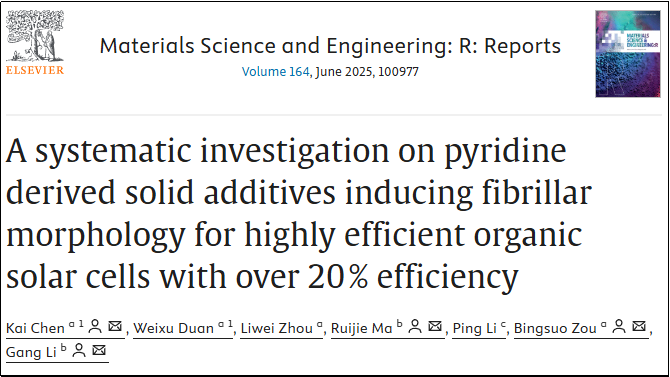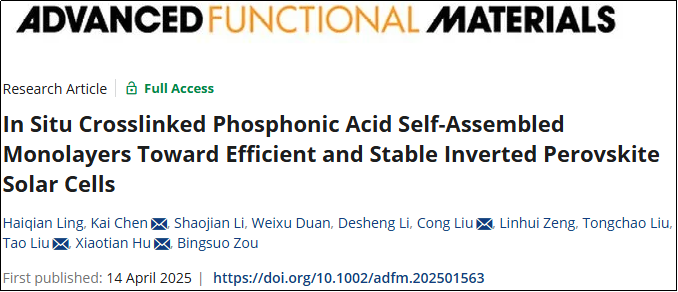Recently, the Nanophotonics Team at Guangxi University has made a series of groundbreaking achievements in the field of organic/perovskite solar cells. The related research findings have been published as papers in internationally renowned academic journals such as Materials Science & Engineering R, Advanced Functional Materials, Small, and Chemical Engineering Journal. Guangxi University is the first affiliation, with Associate Professor Chen Kai from the School of Resources, Environment, and Materials serving as the lead author or corresponding author.
For the first time, the team systematically investigated the mechanism of solid-state pyridine derivative additives with different concentrations and substituents in regulating the phase separation and crystallinity of the D18:L8-BO active layer. The study revealed that optimal performance is achieved when partial fibrillated structures are formed, with the binary blend system reaching an efficiency of 19.18% and the ternary system achieving 20.07%. These results rank among the highest efficiencies reported for OSCs to date.

Meanwhile, the team has also made significant progress in material innovation. For the first time, the team designed and synthesized a novel hole transport material named V3PACz with in-situ crosslinking capability by combining an in-situ self-polymerization strategy with carbazole phosphonic acid self-assembled molecules. This breakthrough enabled the fabrication of quality Poly-V3PACz hole transport layers, achieving an outstanding power conversion efficiency of 25.21% along with excellent stability. This research holds important scientific significance and practical value for the further development of highly efficient and stable perovskite solar cells.

Furthermore, this study also designed and synthesized two PDI-based n-type A-D-A structured organic dopant small molecules, PBDT and PTBDT, as active layer additives. These compounds significantly improved the perovskite film quality, internal charge extraction capability, passivation effect, and stability. Ultimately, devices with an active area of 0.08 cm2 achieved a remarkable PCE of 25.94% with a VOC of 1.18 V and a fill factor (FF) of 86.37%, representing one of the highest reported VOC and PCE values for single-junction IPSCs to date.
The research team also made bold innovations in material design strategy by pioneering the use of deuteration to develop a novel self-assembling hole transport material, 4PACzd8. Perovskite solar cells employing 4PACzd8 as the hole transport layer achieved an impressive power conversion efficiency of 24.87% along with exceptional ultraviolet light stability. This study demonstrates the significant value of deuteration strategy in the design of small-molecule hole transport materials.
These achievements not only provide novel approaches for enhancing the performance of organic/perovskite solar cells, but also establish a crucial foundation for advancing the commercial application of photovoltaic technology. This research was supported by the Guangxi “Nanophotonic Materials and Technology” Talent Highland Program, the Guangxi University High-Level Talent Startup Project, and State Key Laboratory of Featured Metal Materials and Life-cycle Safety for Composite Structures.